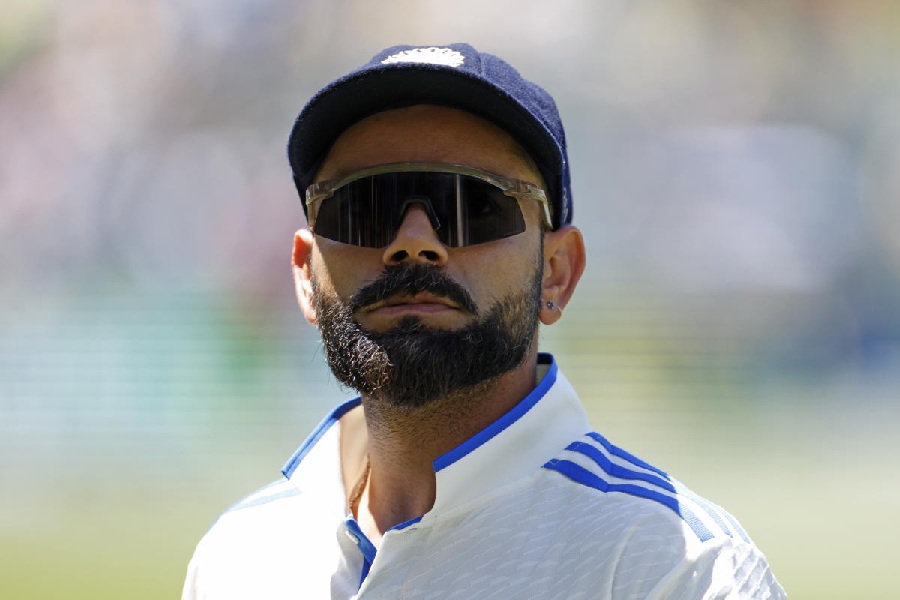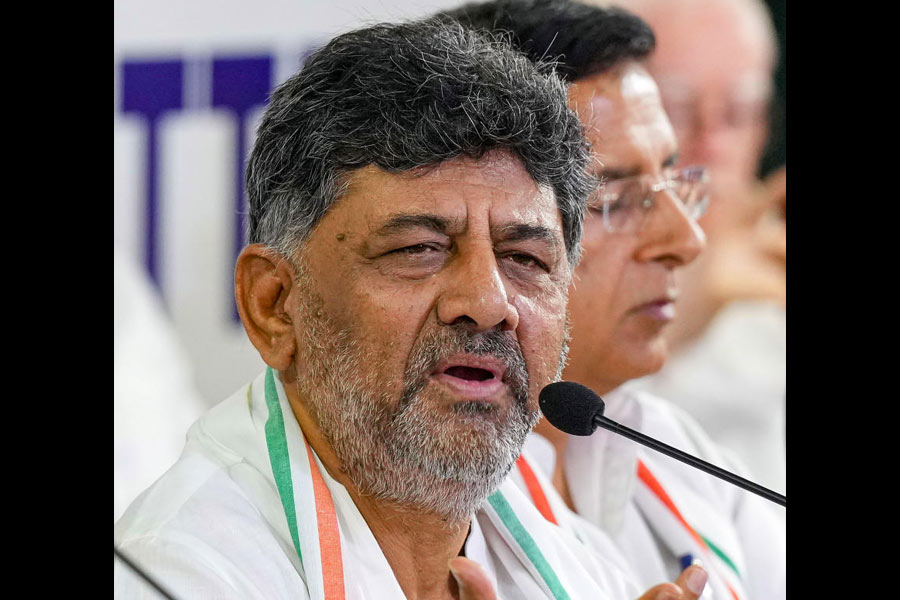As school districts across the US consider whether and how to restart in-person classes, their challenge is complicated by a pair of fundamental uncertainties: No nation has tried to send children back to school with the virus raging at levels like America’s, and the scientific research about transmission in classrooms is limited.
The World Health Organisation has now concluded that the virus is airborne in crowded, indoor spaces with poor ventilation, a description that fits many American schools. But there is enormous pressure to bring students back — from parents, from paediatricians and child development specialists, and from President Donald Trump.
“I’m just going to say it: It feels like we’re playing Russian roulette with our kids and our staff,” said Robin Cogan, a nurse at the Yorkship School in Camden, New Jersey, who serves on the state’s committee on reopening schools.
Data from around the world clearly show that children are far less likely to become seriously ill from the coronavirus than adults. But there are big unanswered questions, including how often children become infected and what role they play in transmitting the virus. Some research suggests younger children are less likely to infect other people than teenagers are, which would make opening elementary schools less risky than high schools, but the evidence is not conclusive.
The experience abroad has shown that measures such as physical distancing and wearing masks in schools can make a difference. Another important variable is how widespread the virus is in the community over all, because that will affect how many people potentially bring it into a school.
For most districts, the solution won’t be an all-or-nothing approach. Many systems, including the nation’s largest, New York City, are devising hybrids that involve spending some days in classrooms and other days online.
Though children are at much lower risk of getting seriously ill from the coronavirus than adults, the risk is not zero. A small number of children have died and others needed intensive care.
The larger concern with reopening schools is the potential for children to become infected, many with no symptoms, and then spread the virus to others, including family members, teachers and other school employees. Most evidence to date suggests that even if children under 12 are infected at the same rates as the adults around them, they are less likely to spread it.
The risk of reopening “will depend on how well schools contain transmission, with masks, for instance, or limiting occupancy”, said Lauren Ancel Meyers, a professor of biology and statistics at the University of Texas, Austin, who has been consulting with the city and school districts.
In Austin, for example, which like cities in Florida and Arizona has seen a recent acceleration in new cases, the estimated infection rate now is about seven per 1,000 residents. That means a school with 500 students would have about four carrying the coronavirus. “The school might be able to contain those, depending on the measures it takes,” Dr Meyers said.
If not, schools could help incubate outbreaks, given that they’re enclosed facilities where students, especially younger ones, are likely to have great difficulty social distancing, never mind wearing masks.
So far, countries that reopened schools after reducing infection levels — and imposed requirements like physical distancing and limits on class sizes — have not seen a surge in coronavirus cases.
Norway and Denmark are good examples. Both reopened their schools in April, a month or so after they were closed, but they initially opened them only for younger children, keeping high schools shut until later. They strengthened sanitising procedures, and have kept class size limited, children in small groups at recess and space between desks. Neither country has seen a significant increase in cases.
There have not yet been rigorous scientific studies on the potential for school-based spread, but a smattering of case reports, most of them not yet peer-reviewed, bolster the notion that it is not inevitably a high risk.
One snapshot comes from a study in Ireland of six infected people (two high school students, an elementary student and three adults) who spent time in schools before they were closed in March. The researchers analysed 1,155 contacts of the six patients to see if any had been found to have confirmed coronavirus infection.
The contacts included participants in school activities that could be fertile ground for transmission, like music lessons on woodwind instruments, choir practice and sports. None of the students appeared to have infected any other people, the authors reported, adding that the only documented transmission of the virus was to two adults who were in contact with one of the infected adults outside of school.
But there have been school-based outbreaks in countries with higher community infection levels and countries that apparently eased safety guidelines too soon. In Israel, the virus infected more than 200 students and staff after schools reopened in early May and lifted limits on class size a few weeks later, according to a report by University of Washington researchers.
In one community in northern France, Crépy-en-Valois, two high school teachers became ill with Covid-19 in early February, before schools closed. Scientists from the Institut Pasteur later tested the school’s students and staff for coronavirus antibodies. They found antibodies in 38 per cent of the students, 43 per cent of the teachers, and 59 per cent of other school staff, said Dr Arnaud Fontanet, an epidemiologist at the institute who led the study.
“Clearly you know that the virus circulated in the high school,” Dr Fontanet said.
Later, the team tested students and staff from six elementary schools in the community. The closure of schools in mid-February provided an opportunity to see if younger children had become infected when schools were in session, the point when the virus struck high school students.
Researchers found antibodies in only 9 per cent of elementary students, 7 per cent of teachers and 4 per cent of other staff.
Testing for infections in schools is essential, public health experts said. The Centres for Disease Control and Prevention in the US recommends testing of students or teachers based only on symptoms or a history of exposure. But that will not catch everyone who is infected.
“We know that asymptomatic or pre-symptomatic spread is real, and we know that kids are less likely to show symptoms if they’re infected than adults,” said Dr Megan Ranney, an emergency medicine doctor and expert in adolescent health at Brown University. Schools should randomly test students and teachers, she said, but that may be impossible given the lack of funding and limited testing even in hospitals.
Countries that have reopened schools have implemented a range of safety guidelines.
Some countries initially brought back only a portion of their students — younger children in Denmark, Norway, Belgium, Switzerland and Greece; older children in Germany, according to the report by University of Washington researchers. Belgium brought back students in shifts on alternate days.
Several countries limited class size, often allowing a maximum of 10 to 15 students in a classroom. Many place desks several feet apart. Several countries group children in pods or cohorts with social interaction largely restricted to those groups, especially at recess and lunchtime.
Mask-wearing policies vary. In Asia, where the practice of wearing masks during flu season is common, many countries are requiring masks in school. Elsewhere, some countries required masks for only some students or staff, such as teachers in Belgium and high school students in France, according to the University of Washington report.
In Germany, students who test negative for the virus do not have to wear masks, according to the report, which said that since opening schools, Germany has seen increased transmission of the virus among students, but not school staff.
The CDC has outlined steps schools can take to minimise the risks for students, including maintaining a distance of six feet, washing hands and wearing masks.
Schools will need to ensure that they circulate fresh air, whether by filtering the air, pumping it in from the outside, or simply by opening windows, said Saskia Popescu, a hospital epidemiologist at The University of Arizona. School nurses will also need protective equipment like gloves, gowns and N95 masks.
There are differences in how other countries are responding when coronavirus cases are identified in schools, with some countries, like Israel, closing entire schools for a single case and others taking the more targeted approach of sending students and teachers in an affected classroom into home quarantine for two weeks.
Keeping schools closed for a prolonged stretch has worrisome implications for social and academic development, child development experts say. It also became evident this spring that denying children a real school day deepened racial and economic inequalities.
New York Times News Service











